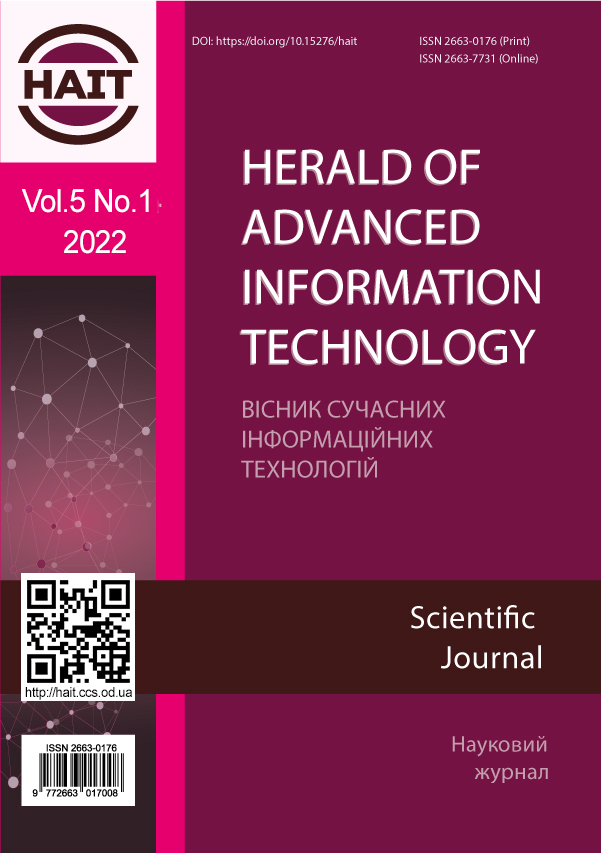Methods of analysis and visualization of active fires and burnt areas of geospatial data
Main Article Content
Abstract
The paper deals with the characteristics of remote sensing systems for forest fires and the analysis of their consequences in terms of burned areas. . The capabilities of the American system FIRMS and the complex European system EFFIS are considered. Algorithms and methods for processing medium resolution satellite observations (MODIS) are analyzed. These images are from Terra and Aqua satellites, namely Land MOD14 / MYD14 for active fire detection and MCD45 for burned areas. The results of a comparative analysis of the best known services MCD45A1, MCD64A1, MCD14ML and ESA's Fire_CCMCD45 service from MCD45 are presented. Their capabilities for monitoring burned areas were compared. It is shown that in the absence of a common state system of remote sensing in Ukraine, it is necessary to use the capabilities of modern, publicly available geographic information systems. For example, the cloud service Google Earth Engine (GEE) is used to retrieve and process satellite data on forest fires and their consequences. The use of GEE makes it possible to obtain geospatial data of forest fire zones and their consequences. These parameters are determined by the date, region, type of multichannel satellite and its channels (layering). Based on this information, a method for processing, analyzing and visualizing geodata of forest fires and their consequences was developed. The method consists of five steps, namely: obtaining input data from publicly available geographic information web services; pre-processing (filtering) of multi-channel satellite images; calculation of indexed images; their thresholding; storing the original data in cloud storage. The following recommendations are developed: on the selection of spectral indices; construction and use of radiometric correction masks; clouds; and a water mask. The study on the possibility of methods to detect forest fires and their consequences is implemented using Google Earth Engine. Comparative characteristics of the number and area of forest fires obtained from the general statistical data using the proposed method are given. The implementation of the proposed method has increased the efficiency of detection of dangerous areas.



